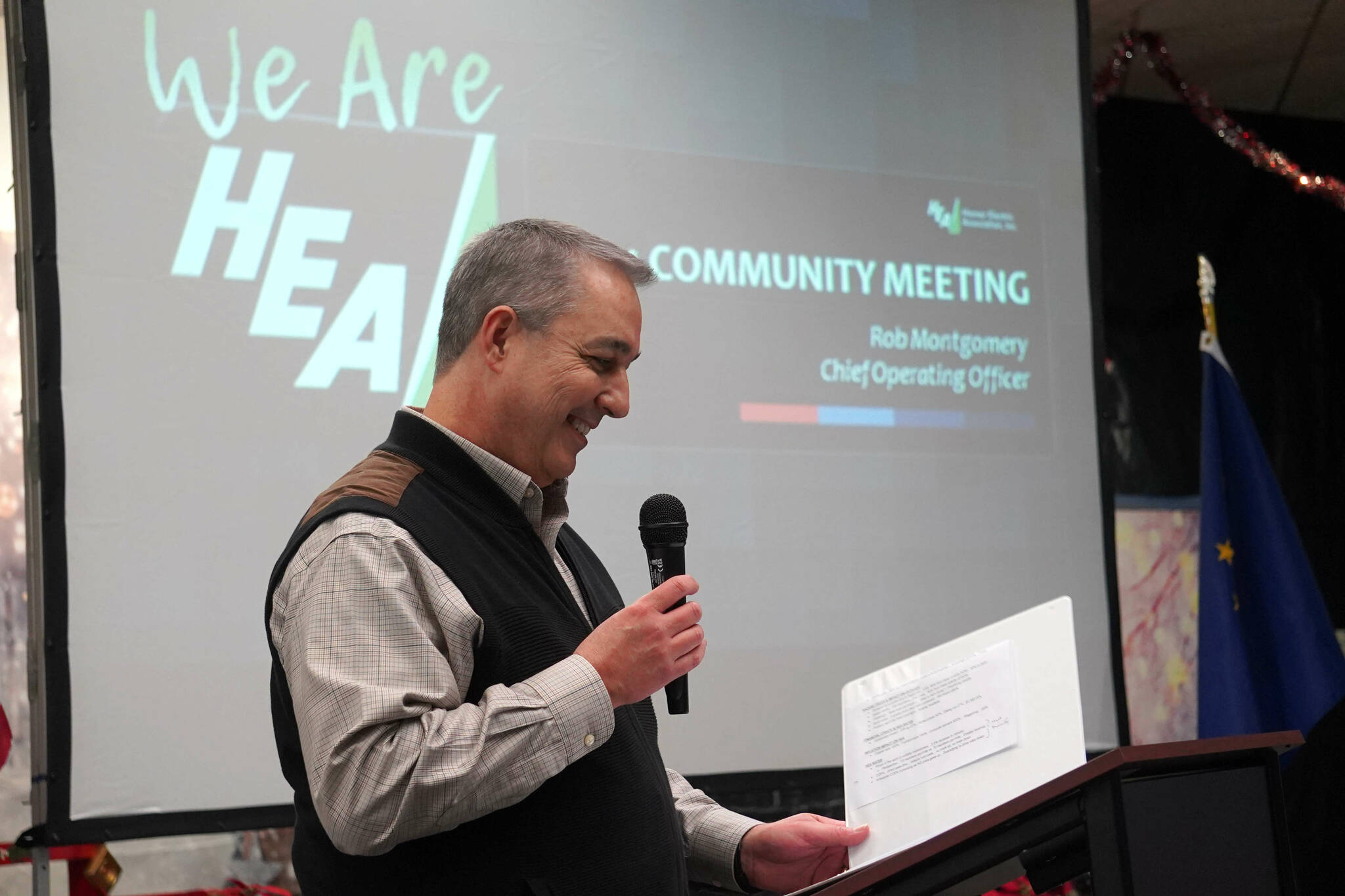At a joint luncheon of the Kenai and Soldotna chambers of commerce on Wednesday, Homer Electric Association Chief Operating Officer Rob Montgomery shared updates on HEA’s strategy for diversifying fuel sources, combating “hazard trees” and managing rates.
The utility produces 90% of its electricity using natural gas, purchased from Enstar Natural Gas. Enstar was part of the Alaska Utilities Working Group who in 2023 released a report saying that Cook Inlet gas cannot meet the demand forecast at current productivity levels.
Montgomery said Wednesday a five-year contract between HEA and Enstar expired in March, and they were only able to negotiate a one-year contract that expires in the coming spring, though the “good news” is that current discussions suggest that HEA will be able to extend that contract. Still, recent uncertainty is driving the utility to explore other options.
“If you are so dependent upon one fuel source to produce your electricity, that puts you in a vulnerable or compromising situation,” Montgomery said. “It’s important that as we look to the future, we look to diversify our fuel supply.”
First among the potential solutions that HEA has been working on is a process that will convert methane gas at the Central Peninsula Landfill into energy. Montgomery said that the project will benefit both HEA and the Kenai Peninsula Borough, creating a “low-cost option” for electricity.
Per information on HEA’s website, methane gas produced by garbage at the landfill would be captured and converted to electricity using an internal combustion engine generator. Waste heat from the generator would also be used to run the landfill leachate evaporator, providing cheap electricity to HEA while also eliminating gas costs borne by the borough to operate its evaporator.
Around $5 million in grants have been secured for design work that is expected to be completed in “the middle of next year,” when Montgomery said he also expects other agreements to be in place for the project.
When completed, he said it would add 5 megawatts of electricity to the utility, which currently uses 80 megawatts to “fulfill all the electric needs today,” per the HEA website.
HEA is also exploring both onshore and offshore wind. For onshore wind, the utility has secured grants from the Alaska Energy Authority to collect data in four potential sites, Happy Valley, the Caribou Hills, the East Forelands in Nikiski and Bradley Bench. Offshore, Montgomery said HEA has partnered with Hilcorp for use of their existing infrastructure, with data collection underway now. Both projects are “early,” he said.
Montgomery also spotlighted the battery energy storage system located just outside of Soldotna, which adds reserve capacity for use during outages. Montgomery said “perhaps its most important function” is stabilization of HEA’s grid by maintaining a consistent frequency of electricity. HEA is looking to add a second battery “within the next five years.”
Finally, Montgomery spotlighted the Puppy Dog Lake Project, undertaken by Anchorage-based Renewable IPP, who seek to create a solar farm in Nikiski that will be the largest in Alaska. HEA’s Board of Directors approved a purchase agreement for the purchase of 30 megawatts of power through that project when it comes online — expected to be around 2028.
“It was really a no-brainer,” Montgomery said. “It’s a low-cost energy option that will help diversify our energy mix as we look to the future.”
Under the purchase agreement, he said HEA will acquire solar energy for around seven and a half cents per kilowatt hour with 1.5% annual escalation — they currently pay nine cents per kilowatt hour for natural gas “and we have no idea where the price of natural gas is going to go over the next several years.”
Montgomery said the utility has to “look at the full breadth of resources that we have available” and make the decisions that make the most sense for the utility.
There’s value, Montgomery said, in purchasing energy from another producer. That’s as opposed to spending funds to build and maintain the facility themselves.
“Had we had to build it and maintain it, those costs would have gone into our rates,” he said. “Which impacts all of you.”
Acknowledging “a lot of outages” in recent years, Montgomery described the issue of hazard trees — beetle-killed trees that are outside of the utility’s right of way that are falling onto power lines. The utility cannot deal with those trees without permission from property owners. In 2024, “year-to-date,” 99% of outages have been caused by those trees, up from 50% in 2023.
To solve that problem, Montgomery said they’ve hired contractors to prioritize areas where the most problems are being seen, approaching property owners and trying to clear the trees. They also received a community wildfire defense grant that will empower “some pretty significant clearing” in the next few years.
Reach reporter Jake Dye at jacob.dye@peninsulaclarion.com.

